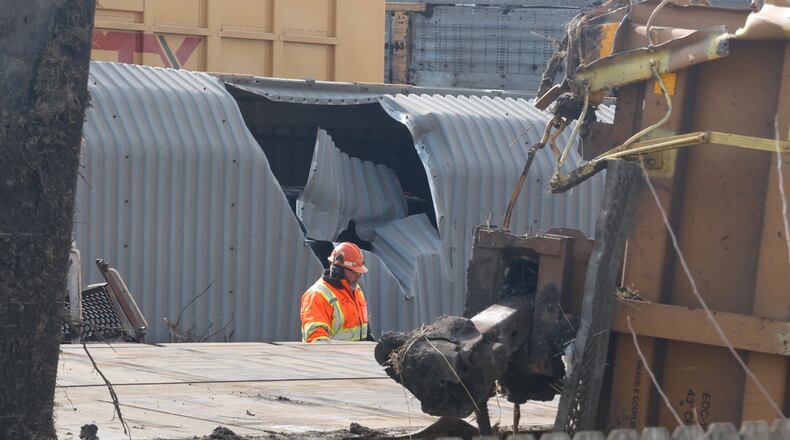Investigators from the National Transportation Safety Board, the agency in charge of overseeing investigations of transportation accidents, arrived on the scene Monday. Norfolk Southern is “cooperating with the NTSB,” as well as “local, state, federal resources,” the company said Monday.
Investigators have access to a wide variety of information, from electronic monitoring information to simply looking at how the cars fall when they derail, said Michael Gorman, University of Dayton professor of Business Analytics and Operations Management.
“Just like a blood spatter report at a crime scene, to get a sense for what happened,” he said. “It’s forensic work that you need to be on site for, with lots of experience.”
A full National Transportation Safety Board investigation takes about a year, but preliminary reports are typically available in 2-3 weeks, according to the agency. With minor crashes, the cause can typically be determined within that 2-3 week time period, Gorman said.
However, at the same time, state and local authorities are also typically conducting their own investigations, said Fred Millar, an Alexandria, Virginia-based independent transportation consultant.
“They look at the speed of the trains, they look at the staffing on the train,” he said. “They will look at all these different factors of workforce behavior and the metallurgy, whether there’s any evidence that there was a failure in the hot boxes.”
Hot boxes are wheel bearings on trains that can sometimes overheat and cause a derailment, Millar said.
“Sometimes they say it’s a very simple thing like a broken track, or a washed out track,” he said. “Sometimes it’s much more difficult to determine.”
Two passers-by caught video of the moment the train derailed in Springfield from different angles, one on a dash-cam, and the other on a phone video. Each were from opposite sides of the track as the train came off the tracks.
Just prior to the derailment, one of the cars appears to wobble on the tracks, before popping off and bringing attached cars with it, Gorman observed from the dash-cam video. While the footage is incredibly useful to investigators, it alone is not enough to determine the true cause of the crash, he said.
It’s also possible the true cause of the crash happened miles before the moment the train lurched off the rails, Millar said.
“These trains are enormously heavy, and they can go quite a ways limping with one set of wheels not working,” he said.
About the Author

